And the Use of Slash Walls for Forest Regeneration
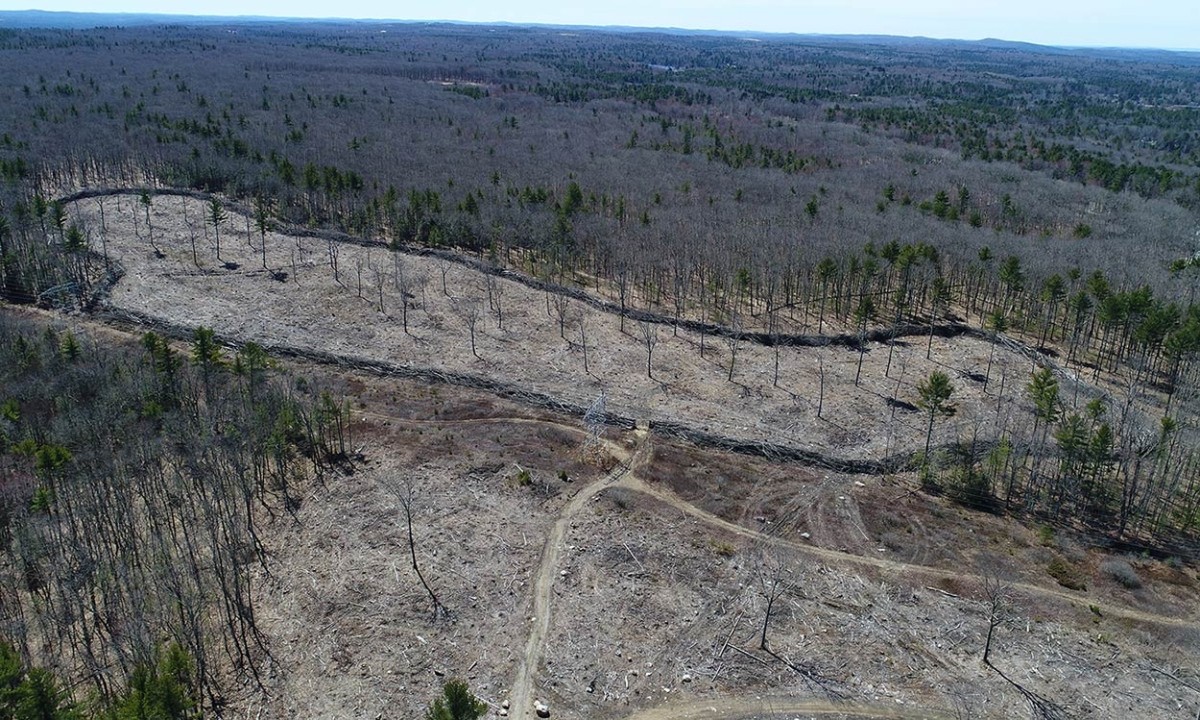
White-tailed deer are so abundant in the eastern United States that it may be hard to believe the species was absent in many areas, including most of the Northeast, just a century ago. Nationwide, subsistence hunting combined with commercial market hunting and widespread forest clearing drove deer numbers to approximately 500,000 by the early 1900s. Remnant populations were limited to inaccessible portions of northern Maine, remote pockets of the Adirondacks and the Ozarks, and undeveloped coastal regions.
Since that time, white-tailed deer populations have rebounded dramatically. Changes in deer management, the elimination of large predators, stricter wildlife law enforcement – and most impactful – the expansion of edge habitats such as suburban green spaces and powerline corridors allowed the deer population to rise to a current level of approximately 30 million. Along the way, the status of white-tailed deer changed from a species of scarcity to one that is so common that it poses a significant challenge for natural resource managers, with negative impacts on trees, understory plants, and other wildlife.
Effects of Selective Feeding
White-tailed deer have substantial impacts on forest growth and plant species composition. In spring, summer, and early fall, deer feed extensively on wild herbs, grasses, and young leaves, browsing on vegetation from ground level to about 6 feet high. As selective foragers, they seek out some plants and avoid others based on nutrient content and possibly taste. They are likewise selective in their late fall and winter diets, when they switch to feeding on woody twigs, supplemented with acorns and other late-season mast.
Estimates of the amount of plant material consumed by deer vary. The amount of woody twigs (or browse) consumed is perhaps the most reliable estimate because clipped twigs provide measurable evidence. Wildlife managers estimate the daily consumption of browse by deer at about 7 pounds, with 600 seedling tips per pound or up to 4,200 seedling tips per deer per day. At this consumption rate, even a small herd of deer can have a significant local impact on forest vegetation. Where deer are abundant, favored food plants may grow more slowly or become scarce, while those plants avoided by deer (including invasives such as common buckthorn, garlic mustard, and Japanese barberry) are able to spread.
One of the first studies to examine the role of deer on forest composition was conducted in the 1980s in the national forests of northern Wisconsin. Management of those forests included creating and maintaining grassy openings to provide additional feeding opportunities for deer. As a result, deer densities existed at substantially higher levels than would have been supported by unbroken forests. Researchers had fenced small areas within the study forests to exclude deer, thus enabling a comparison of plants that were protected to those exposed to browsing. Comparisons revealed that seedling hemlock and white cedar were essentially absent outside the exclosures, yet both trees were present in the forest canopy. This observation prompted the researchers to conclude that hemlock and cedar would eventually disappear from these forests, and the forests would become dominated by tree species that deer didn’t eat.
A similar situation exists in much of the Northeast, where oaks and maples are a dominant component of mature hardwood forests. Here, foresters have become frustrated by their inability to regenerate young oaks and maples after a timber harvest. In portions of Pennsylvania, New York, and much of central and southern New England, timber harvests are planned with the expectation that stump sprouts or seeds from retained trees will provide sufficient regeneration to replace the cut trees. Unfortunately, intense browsing by deer suppresses the growth of sprout and seedling oaks and maples, preventing them from repopulating the forest canopy. As a result, trees that are less favored by deer, such as birch and beech, are becoming more abundant. This shift in tree composition has obvious ramifications to landowners’ ability to produce valuable lumber, and also degrades habitat for a wide variety of animals that consume oak acorns and maple seeds, or use these hardwoods in other parts of their life cycles.
From Plants to Insects to Nesting Birds
The effects of deer on forest vegetation goes beyond trees. A before-and-after study in the Allegheny National Forest of northwestern Pennsylvania, for example, examined how deer affect ground-layer vegetation: herbs, wildflowers, and shrubs. Relying on an inventory conducted in 1929, biologists conducted an identical inventory at the same location almost 70 years later. During the period between the two surveys, state estimates for deer density in the region increased from fewer than 10 to more than 30 deer per square mile. In the second, 1995 inventory, more than 80 percent of the species of herbs, wildflowers, and shrubs that were present in the 1929 inventory had disappeared. A related study showed that deer caused substantial reductions among Indian cucumber and trillium. These spring wildflowers only appeared in areas inaccessible to deer.
Among the “winners” in heavily deer-browsed forests, is hay-scented fern. Deer avoid the plant, likely because it contains an enzyme that disrupts nutrient absorption. Where deer have cleared the way by removing other plants, hay-scented fern can spread (using rhizomes) in dense, many-acre patches. Once established, these patches shade the forest floor and prevent other plants from sprouting.
Hay-scented fern’s dominance in forest understories is just one example of the long-term negative influence of heavy browsing. Research from western New York showed that deer not only reduced the abundance of native plants, but their feeding patterns eventually altered the species composition of seeds lying dormant in the soil. As a result, species that are reduced or eliminated cannot readily return, even if deer numbers later diminish, and forest composition may be impacted for decades or longer.
Deer impacts on forest plant growth and diversity inevitably have consequences for other wildlife as well. For instance, songbird nests are particularly responsive to alterations in vegetation structure and composition. To evaluate the effects of deer on vegetation and subsequently on nesting birds, in the 1990s, Bill McShea and John Rappole of the Smithsonian Institution established a series of 10-acre fenced (no deer access) plots along with paired, unfenced plots (available to deer) in the forests of western Virginia. Nine years later, herbs and shrubs were clearly more diverse and abundant within the exclosures. Likewise, birds affiliated with near-ground vegetation, such as ovenbirds, were more abundant in the deer-excluded plots than in the open forest.
Food availability also affects bird selection of nesting sites, and insects – especially the caterpillars of butterflies and moths – are an essential food for nesting songbirds. Researchers in central Pennsylvania compared aboveground insect abundance in a site where deer had been excluded by fencing for 60 years and found that plant species richness was 5 times greater and insect abundance and diversity were 50 percent higher inside the exclosure than outside it. In nearby northwestern New Jersey, studies indicated that deer browsing contributed to a 40-percent reduction of the species of caterpillars associated with wildflowers and shrubs.
Given their profound impacts on both the physical structure and composition of forest communities, white-tailed deer can be considered ecosystem engineers. Due to their intensive browsing, northeastern forests that once supported a diversity of young trees, and rich understories of wildflowers and shrubs, have become structurally simple and species-poor habitats. In addition to reducing tree diversity, selective feeding by deer may degrade future forest resilience to climate change by impeding the northward dispersal of some tree species. Recently, David Gorchov at Miami University in Ohio, along with 11 other researchers, reviewed more than two dozen studies that examined the effects of deer and invasive plants on the biodiversity of eastern forests. Not surprisingly, they concluded that deer were implicated in the reduction of plant diversity and also in the spread of invasives. More surprising was their conclusion that deer abundance had a much greater influence on widespread declines in forest diversity than invasive plants did. For this reason, Gorchov warned that efforts to restore native plant diversity by simply removing invasives will not succeed without also controlling deer numbers.
What Steps Can be Taken to Limit the Effects of Deer?
There are essentially two ways to reduce the impacts of deer over-browsing in forests. One is to reduce deer numbers, for example, through more extensive regulated hunting (especially of does), the reintroduction of large predators, or the reduction of edge habitat across the region so that deer food resource levels drop substantially. All these approaches involve politics and policy decisions, and therefore, are not of much practical help to forest managers in the short term.
The other way to reduce deer damage, at least temporarily and at a local level, is through exclosures. Farmers and forest managers currently use fencing to protect trees in orchards and in regenerating commercial forest stands. But the initial costs and ongoing maintenance of fences are substantial. Fencing to protect understory vegetation makes the most sense, for example, where a forest manager wants to protect a patch of rare plants – and can make a commitment to both the cost and time of continued monitoring and repair. Because hungry deer can (and will) jump to reach succulent plants, fences need to be at minimum 8 feet tall.
Another option for landowners and forest managers who are specifically concerned about regeneration of trees susceptible to deer damage is to incorporate exclosures into timber harvest plans. Peter Smallidge and Brett Chedzoy, director and manager, respectively, of Cornell University’s Arnot Forest, and colleagues have been exploring the use of slash walls as a method to protect sprouts and seedlings after timber harvests.
During the harvest, loggers encircle cut areas with piles of tree tops and low-grade logs. They stack this debris high and wide enough that it serves as a barrier to deer. Smallidge and Chedzoy’s current recommendations for slash wall dimensions are that they stand 10 feet tall and 20 feet wide at the base. Stems used in the walls should be a minimum of 2 inches in diameter, and the walls should also be sufficiently dense to prevent deer from crawling through. However, Smallidge, Chedzoy, and their team are currently experimenting to determine whether smaller walls can be effective barriers under some circumstances.
Early results from slash walls established at Arnot Forest and in New England are promising. In Massachusetts and Connecticut, first-year growth of oak stump sprouts within slash walls was greater than 3 feet compared to only 1 foot outside the wall. Researchers at Cornell have indicated that costs of slash wall construction are approximately one-third that of fencing, and existing state or federal cost-share programs may cover a substantial portion. Slash walls won’t permanently bar deer – after a decade or so, the slash settles and decays to a point where deer are likely to find an entry. But this technique can provide temporary protection for emerging sprouts and seedlings, enabling them to grow sufficiently tall so they’re less vulnerable to browsing.
Biologists are just beginning to evaluate other wildlife species’ responses to slash walls. Paul Curtis, a wildlife ecologist at Cornell University, and his cooperators have examined animal responses to slash walls near Ithaca, New York, using remotely triggered cameras positioned just outside a wall and in the adjacent forest. Curtis speculated that slash walls might serve a similar habitat function as very large brush piles. Similar to brush piles, slash walls offer shelter and shaded, moist soils that support an abundance of insects and other invertebrates. These in turn attract a variety of reptiles, amphibians, and small mammals. Cameras revealed that indeed a wide variety of animals, from gray squirrels to black bears, explored the walls. Foxes and coyotes preyed on small mammals found in the wall. The slash walls also seem likely to provide attractive denning sites for cottontail rabbits and hibernating snakes and bears.
In summary, slash walls are a local, short-term response to the decades-old problem of deer overabundance. They can enable landowners to successfully regenerate important tree species that are vulnerable to foraging deer. The protected sites within these walls can also help us understand the biodiversity that we’ve lost through deer over-browsing. Yes, there are substantial challenges to developing long-term, regional solutions to the overabundance of deer. But these challenges must be met if we are to restore and maintain diverse and healthy forests.


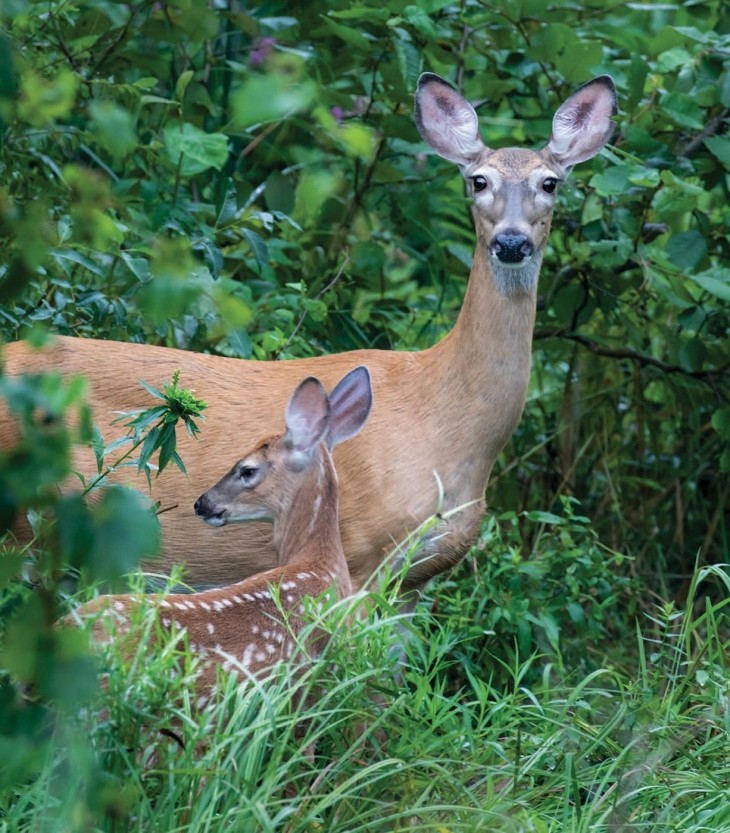
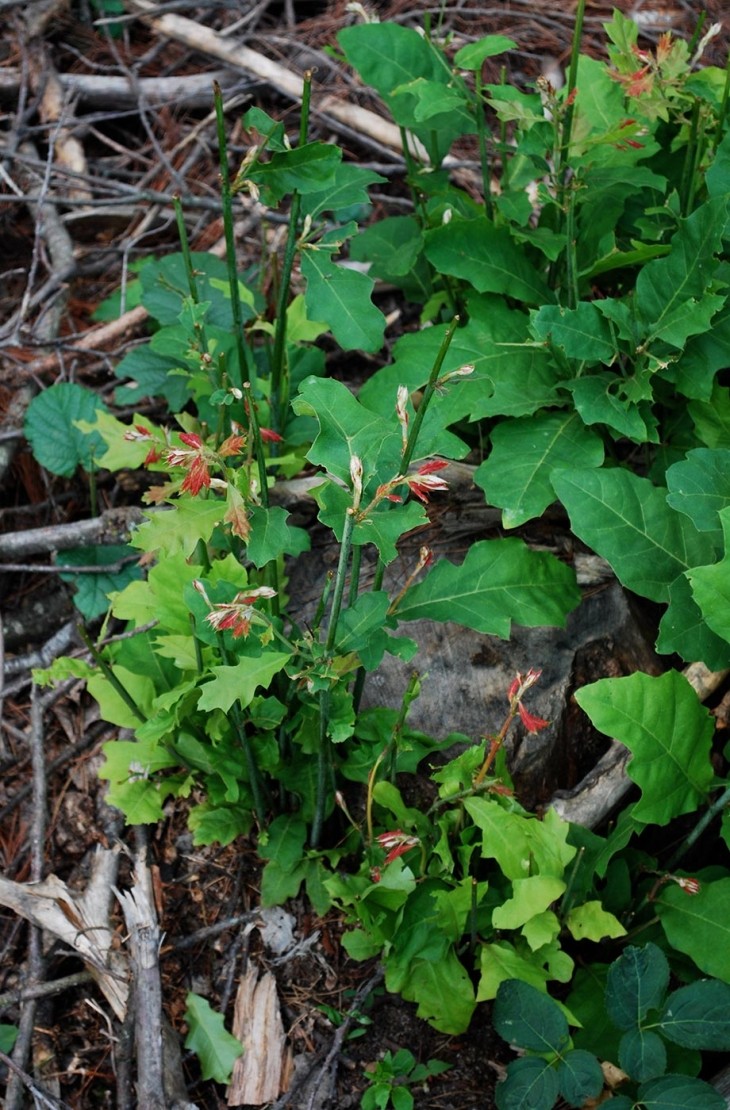
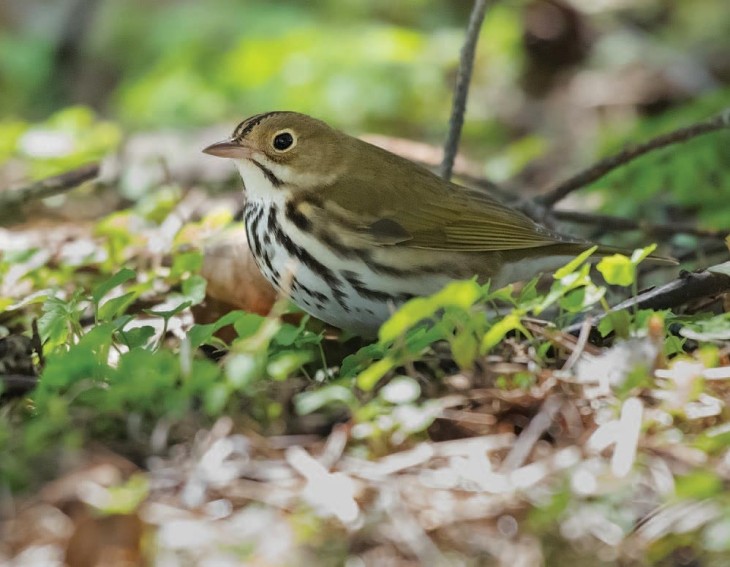

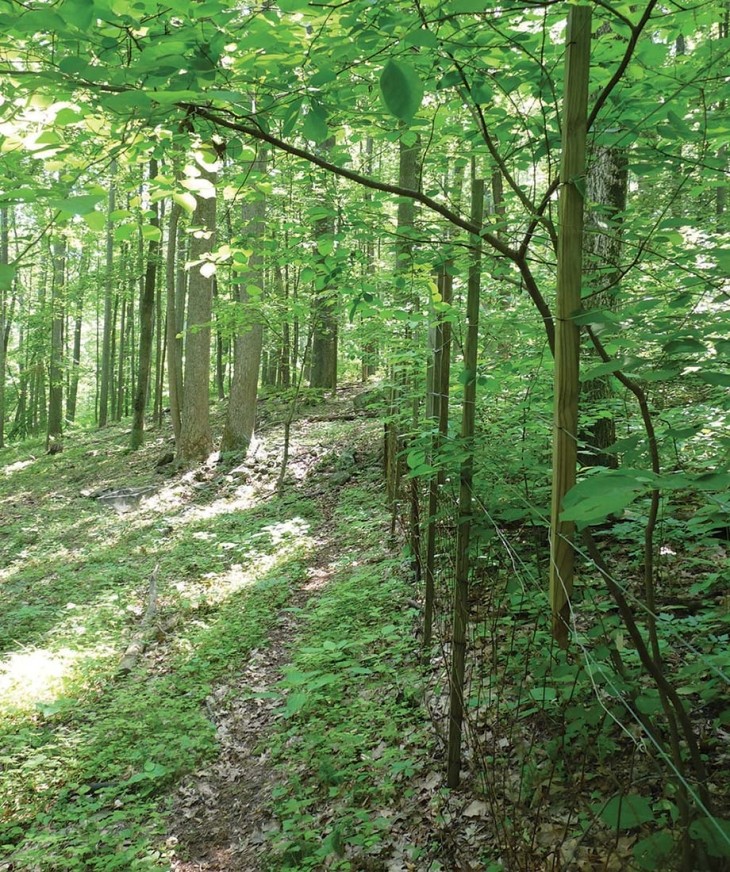


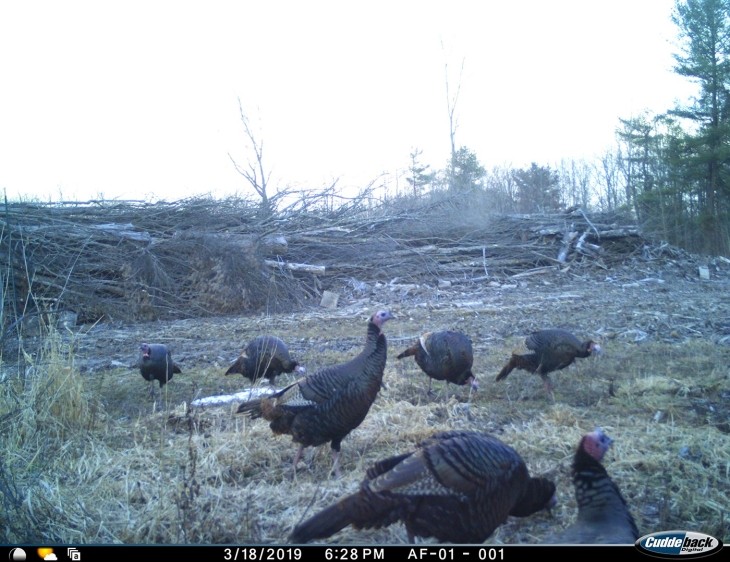
Discussion *